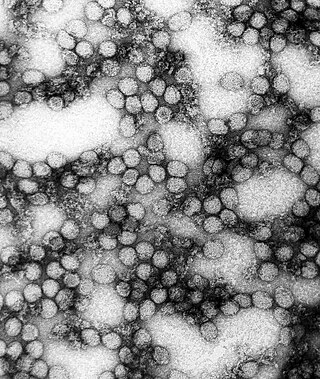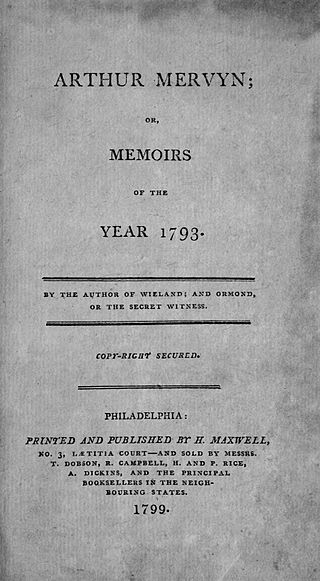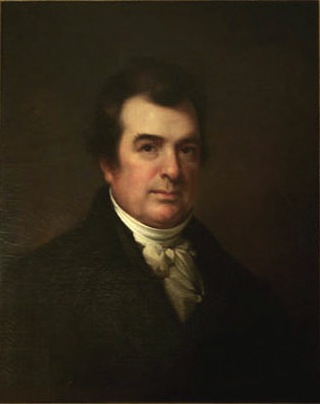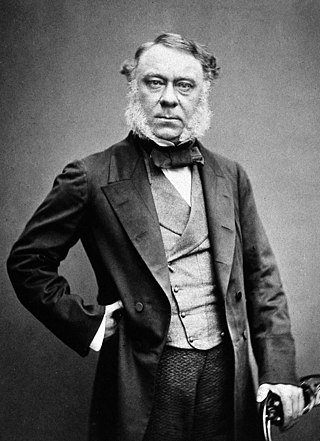Hosack's Folly is a 2005 historical novel written by Australian author Gillen D'Arcy Wood. Based on the life of renowned New York physician Dr. David Hosack, the story takes place in 1820s Manhattan during an impending yellow fever epidemic.
Hosack's Folly is a 2005 historical novel written by Australian author Gillen D'Arcy Wood. Based on the life of renowned New York physician Dr. David Hosack, the story takes place in 1820s Manhattan during an impending yellow fever epidemic.
The story begins with a recounting of the legendary duel between Alexander Hamilton and Aaron Burr at Weehawken, New Jersey in 1804. The prologue tells of how Hamilton brought among his crew a young doctor, David Hosack, who tended to Hamilton following his fatal wounding at the hands of Burr.
Jumping forward 20 years into the future, Dr. Hosack and apprentice Albert Dash realize a yellow fever outbreak is upon them after treating a man who is killed by the disease. Hosack sends his apprentice to discover all he can about where their patient may have contracted the disease, and eventually comes upon the conclusion that it was brought in the hull of a ship, the Belladonia, from Kingston, Jamaica. Hosack and Dash at once begin a campaign for a quarantine of the Manhattan docks, as this is the only way to prevent an epidemic.
Concurrently, a powerful coalition including Manhattan Mayor Van Ness, newspaper editor Eamonn Casey, and socialite John Laidlaw concoct a plan that includes Casey's candidacy for governor of New York, in order to put in place a plan for the construction of an aqueduct that would provide water to all of Manhattan. Upon hearing Hosack's call for a quarantine on the docks, Casey begins a smear campaign in his paper to discredit Hosack, because a quarantine on the docks would make an aqueduct impossible.
During this time, Albert Dash is instructing Casey's daughter, Virginia, in the study of botany. Virginia is learning much from Dash, and has developed a strong passion for her tutor. Telling him is impossible however, as Albert is engaged to her best friend Vera, the daughter of John Laidlaw and aspiring stage actress. The clashes among Dash and Vera's socialite lifestyle create tensions among him and the upper class of Manhattan, who do not believe he is a good fit for Vera.
The smear campaign on Dr. Hosack proves successful, and his call for quarantine is overruled at a hearing. Sensing victory in their grasp, the group behind the aqueduct plan begins pitching their idea, which seems very promising because of the lack of clean, drinkable water in the city.
When yellow fever breaks out in Philadelphia, a panic rises up among Manhattan citizens, but it is slowly pushed to the back of their minds through reassurances by Laidlaw, the Mayor, and Casey, along with the arrival of prominent English stage actor Edmund Leadbetter, who is set to perform at the rival theater from Vera Laidlaw, set to make her stage debut as Ophelia in Hamlet. When Leadbetter offends all of Manhattan by bashing American lifestyle, the yellow fever in Philadelphia becomes a non-issue.
Leadbetter issues an apology and plans to still perform, but his appearance in theater creates a riot. Vera, Virginia, Albert, and others who are in attendance are lost in the giant, fighting crowd. When Albert comes into danger from the crowd, Virginia rushes forward and protects him, causing both to be injured.
Casey's candidacy has so far taken some damage because of the scare in Philadelphia and his rant against Hosack, but he and Laidlaw continue to believe he can still gain the vote. This comes to an end when Hosack directs a stagecoach to city hall containing the body of a man already dead from yellow fever. Laidlaw and Casey flee to Ambleside and the home of Samuel Geyer while Manhattan becomes a scene of panic, as yellow fever infection becomes widespread. Dash and Hosack begin taking in a steady flow of patients in their hospital and treat those they believe they can save. At night Hosack calls Dash into his office, where Dash is overcome with the sickness.
Vera and Virginia escape from Ambleside and arrive at the hospital, as it is well known Hosack is short of help in fighting the fever. On their way they discuss their deepest wishes, and it comes to light that Vera is now in love with Edmund Leadbetter and he has invited her to join him in England as his stage partner. Virginia confesses her love for Albert as well, and is relieved to hear Vera is not upset with her.
Upon arriving at the hospital, Virginia is taken to care for Albert, while Vera is taken by a nurse to attend to the mass of patients needing care. Virginia confesses her love to Albert as he lies on his sickbed, even though in his delusional state he cannot hear her. Virginia eventually leaves Albert and falls asleep, and when she is awoken Dr. Hosack informs her that Albert has gotten up and is recovering, and wishes to see her.
The Epilogue informs us that Vera indeed has left for England, along with her entire family, as her father wished to avoid disgrace for his actions. Eamonn Casey has decided to quit publishing his newspaper, and to withdraw from the race for governor. Virginia and Albert are living together at Dr. Hosack's villa while Albert continues to recover. Albert is offered a professorship at Columbia in botany, but declines when Dr. Hosack issues the invitation, saying he and Virginia plan to travel west, where he may open his own hospital and she may run it.

The Plague is a 1947 absurdist novel by Albert Camus. It tells the story from the point of view of a narrator in the midst of a plague sweeping the French Algerian city of Oran. The narrator remains unknown until the beginning of the last chapter. The novel presents a snapshot into life in Oran as seen through the author's distinctive absurdist point of view.

A quarantine is a restriction on the movement of people, animals and goods which is intended to prevent the spread of disease or pests. It is often used in connection to disease and illness, preventing the movement of those who may have been exposed to a communicable disease, yet do not have a confirmed medical diagnosis. It is distinct from medical isolation, in which those confirmed to be infected with a communicable disease are isolated from the healthy population. Quarantine considerations are often one aspect of border control.

Yellow fever is a viral disease of typically short duration. In most cases, symptoms include fever, chills, loss of appetite, nausea, muscle pains—particularly in the back—and headaches. Symptoms typically improve within five days. In about 15% of people, within a day of improving the fever comes back, abdominal pain occurs, and liver damage begins causing yellow skin. If this occurs, the risk of bleeding and kidney problems is increased.

Walter Reed was a U.S. Army physician who in 1901 led the team that confirmed the theory of Cuban doctor Carlos Finlay that yellow fever is transmitted by a particular mosquito species rather than by direct contact. This insight gave impetus to the new fields of epidemiology and biomedicine, and most immediately allowed the resumption and completion of work on the Panama Canal (1904–1914) by the United States. Reed followed work started by Finlay and directed by George Miller Sternberg, who has been called the "first U.S. bacteriologist".

John Brown Hamilton was an American physician and soldier. He was appointed the second Surgeon General of the United States from 1879 to 1891.

A cordon sanitaire is the restriction of movement of people into or out of a defined geographic area, such as a community, region, or country. The term originally denoted a barrier used to stop the spread of infectious diseases. The term is also often used metaphorically, in English, to refer to attempts to prevent the spread of an ideology deemed unwanted or dangerous, such as the containment policy adopted by George F. Kennan against the Soviet Union.

Luke Pryor Blackburn was an American physician, philanthropist, and politician from Kentucky. He was elected the 28th governor of Kentucky, serving from 1879 to 1883. Until the election of Ernie Fletcher in 2003, Blackburn was the only physician to serve as governor of Kentucky.

Arthur Mervyn is a novel written by Charles Brockden Brown. Published in 1799, Arthur Mervyn, one of Brown's more popular novels, represents Brown's dark, gothic style and subject matter, and is recognized as one of the most influential works of American and Philadelphia Gothic literature. It started earlier as a serial in Philadelphia's Weekly Magazine of Original Essays, Fugitive Pieces, and Interesting Intelligence, but it was discontinued because the magazine's other writers were not keen on the feature and the editor of the magazine died from yellow fever. Hence, Brown decided to issue the book himself. The novel also includes the yellow fever epidemic in Philadelphia between August–October 1793 as an important plot element.

Grand Canary is the third novel by British author A. J. Cronin, initially published in 1933.

During the 1793 Yellow Fever epidemic in Philadelphia, 5,000 or more people were listed in the register of deaths between August 1 and November 9. The vast majority of them died of yellow fever, making the epidemic in the city of 50,000 people one of the most severe in United States history. By the end of September, 20,000 people had fled the city, including congressional and executive officials of the federal government. Most did not return until after the epidemic had abated in late November. The mortality rate peaked in October before frost finally killed the mosquitoes and brought an end to the outbreak. Doctors tried a variety of treatments but knew neither the origin of the fever nor that the disease was transmitted by mosquitoes.

David Hosack was an American physician, botanist, and educator. He remains widely known as the doctor who tended to the fatal injuries of Alexander Hamilton after his duel with Aaron Burr in July 1804, and who had similarly tended to Hamilton's son Philip after his fatal 1801 duel with George Eacker. He established several institutions including Elgin Botanic Garden and a medical school at Rutgers University.

Angelo Antonio Frari was a Dalmatian Italian physician, who served as the municipal physician and the head of the lazaretto of Split, province of Spalato (1806–1821), the protomedicus, and the president of the Maritime Health Magistrate of Venice (1835–1843), famous epidemiologist and historian of medicine.

The evolutionary origins of yellow fever most likely came from Africa. Phylogenetic analyses indicate that the virus originated from East or Central Africa, with transmission between primates and humans, and spread from there to West Africa. The virus as well as the vector Aedes aegypti, a mosquito species, were probably brought to the western hemisphere and the Americas by slave trade ships from Africa after the first European exploration in 1492. However, some researchers have argued that yellow fever might have existed in the Americas during the pre-Columbian period as mosquitoes of the genus Haemagogus, which is indigenous to the Americas, have been known to carry the disease.
Manuel Gregorio Argerich or Manuel Argerich (1835–1871) was an Argentine philosopher, author, lawyer, politician, mathematician and medical doctor.
The typhus epidemic of 1847 was an outbreak of epidemic typhus caused by a massive Irish emigration in 1847, during the Great Famine, aboard crowded and disease-ridden "coffin ships".

The Millerson Case is a 1947 American mystery drama film directed by George Archainbaud and starring Warner Baxter, Nancy Saunders and Clem Bevans. In the 8th film of Columbia's Crime Doctor series, Dr. Robert Ordway is vacationing in the Blue Ridge Mountains district of West Virginia when a Typhoid fever epidemic breaks out. Three deaths occur, with the first two being typhoid-caused. The death of the third person is from poisoning.

James Ormiston McWilliam (1808–1862) was a Scottish naval surgeon, physician and writer on infectious diseases, best known as medical officer to the 1841 Niger expedition.
The Baltimore City Health Department(BCHD) is the public health agency of the city of Baltimore, Maryland. BCHD convenes and collaborates with other city agencies, health care providers, community organizations and funders to "empower Baltimoreans with the knowledge, access, and environment that will enable healthy living."

On 20 January 2016, the health minister of Angola reported 23 cases of yellow fever with 7 deaths among Eritrean and Congolese citizens living in Angola in Viana municipality, a suburb of the capital of Luanda. The first cases were reported in Eritrean visitors beginning on 5 December 2015 and confirmed by the Pasteur WHO reference laboratory in Dakar, Senegal in January. The outbreak was classified as an urban cycle of yellow fever transmission, which can spread rapidly. A preliminary finding that the strain of the yellow fever virus was closely related to a strain identified in a 1971 outbreak in Angola was confirmed in August 2016. Moderators from ProMED-mail stressed the importance of initiating a vaccination campaign immediately to prevent further spread. The CDC classified the outbreak as Watch Level 2 on 7 April 2016. The WHO declared it a grade 2 event on its emergency response framework having moderate public health consequences.

John Bard was an American physician notable for being the first in the United States to participate in a systematic dissection for the purpose of instruction and the first in the country to report a case of extra-uterine pregnancy.